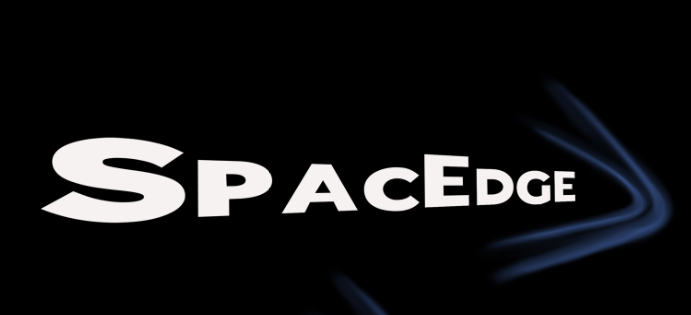Educator Onboarding
LEO Art Challenge Workshop
Satellite Tracking, Orbits, and Modeling
Workshop: Satellite Tracking, Orbits, and Modeling
Workshop: Trek-a-Sat
Workshop: Yerkes
Workshop: Electrostatics in Space - Carthage- Yerkes
Workshop: Life in Space! BTCI
Workshop: More Than a Rainbow - Yerkes
Workshop: Small Steps Teachimg Space Brings Giant Steps in Classrooms-SEEC
Workshop: 2017-01-28 Yerkes
Tools You Might Use
Educational Learning
Standards
Documentation
The Space Between Stars
Topic outline
-
Written by: Kimberly Tran, EIS Education Team Member, January 2016 Updated July 2022
Title: The Space Between Stars
Topic: Calculating distance between points on the two and three dimensional plane, Graphing on the three dimensional plane
Grade (Age) Level: High School (14-18)Pre-requisites: Completion of grade 11/12 functions is highly recommended.
Educational Standards: This project supports U.S. Common-Core
This project meets these Next Generation Science Standards (opens in a new tab)
Note: Please list other standards in the news forumIn this lesson, students will learn about two-dimensional and three-dimensional planes, the latter of which is essential in space research is an essential tool to exploring space. Students will be introduced to real-life applications of three-dimensional spaces and practice graphing three-dimensional functions by completing various worksheets, aided by an interactive three-dimensional graph for visual aid.
-
General news and announcements
-
During the course of this module, you may come across an article of application of 3-D graphing in space research and study. In this forum, post any applications you can think of along with interesting articles related to the use of 3-D graphing in space.
-
Before starting the lesson, attempt this pre-quiz to test your knowledge about the material that will be covered.
-
-
This lesson aims to connect graphing in two-dimensions with graphing in three-dimensions, along with graphing various functions and shapes in the three-dimensional coordinate plane.
In this activity:
- Review the links to learn more about constellations
- Review the worksheet
- Use the webpage to assist you in completing the worksheet
- Respond to the worksheet in your Journal
You may wish to check your answers with the solutions provided
-
Frequently asked questions about constellations. Click on the link above to learn more about constellations before starting the activity. This link is best viewed in full-screen.
-
The constellations and their images. Click on the link above to access the images of the constellations and to learn more about them. This link is best viewed in full-screen. This link should be used as an aid in completing the worksheet 'Review of Mapping and Calculating Distance' .
-
This worksheet reviews mapping coordinates and calculating distances between points. Please review these concepts before moving on to the activities. Submit the answers to the worksheet in your journal.
-
In this activity:
- Review the worksheet
- Use the webpage to assist you in completing the worksheet
- View the video
- Respond to the worksheet in your Journal
- Complete a Journal entry
You may wish to check your answers with the solutions provided. For additional guidance, view the video linked after the Journal.
-
This worksheet introduces graphing in the three-dimensional plane. Please complete this worksheet and submit your solutions in your journal for this activity.
-
To be used in conjunction with the worksheet 'Introduction to Graphing in Three Dimensions'. This link is best viewed in full screen. If used, please take screen shots of your work and paste it into the document.
-
This video by Marty Brandel discusses graphing linear equations in three dimensions and includes two examples. Please refer to this video for the journal activity.
-
This video by Marty Brandl goes over the basics of graphing points in thee dimensions and includes examples. Please refer to this video as a reference or to review the concepts of this activity.
-
In this activity:
- Review the worksheet
- Respond to the worksheet in your Journal
- Use the website to complete the Journal entry
- Complete a Journal entry
You may wish to check your answers with the solutions provided.
-
This worksheet covers the basics of calculating distance between two points in 3D. Includes examples and questions to complete.
-
This link is best viewed in full-screen. To be used in conjunction with Journal 3 'Shapes in 3D'. This link is meant to be utilized as a resource for future studies.
-
In this activity:
- Ensure you have reviewed the website
- Review the worksheet
- Respond to the worksheet in your Journal
- Use the website to complete the Journal entry
- Complete a Journal entry
You may wish to check your answers with the solutions provided.
-
Please click the link above to review forming the equation of a line from two points. This link is best viewed in full screen.
-
Please click the link above to review graphing circles. This link is best viewed in full screen.
-
Please ensure that you have reviewed graphing linear equations, graphing circles, and linear equations from two points before proceeding with this worksheet. Submit the answers to the worksheet in the Journal.
-
Click on the link above to learn about celestial coordinates. This link is best viewed in full-screen and should be used as an aid in completing the journal .
-
-
Before starting the test, please review the previous activities and be sure to understand all the topics covered. Concepts discussed in the journals may be tested as well.
-
Please let us know your thoughts about this course.
- What was your favorite activity?
- What was the most important part of the course for you?
- Are there any areas that need improvement?
- How was the length of the course?
- Any additional comments
Please use complete sentences in your responses.
-
-
Send a Postcard to Space through NSS Supported Blue Origin Club For The Future initiative!
Visit: SpacEdge Academy Postcards in Space Course

